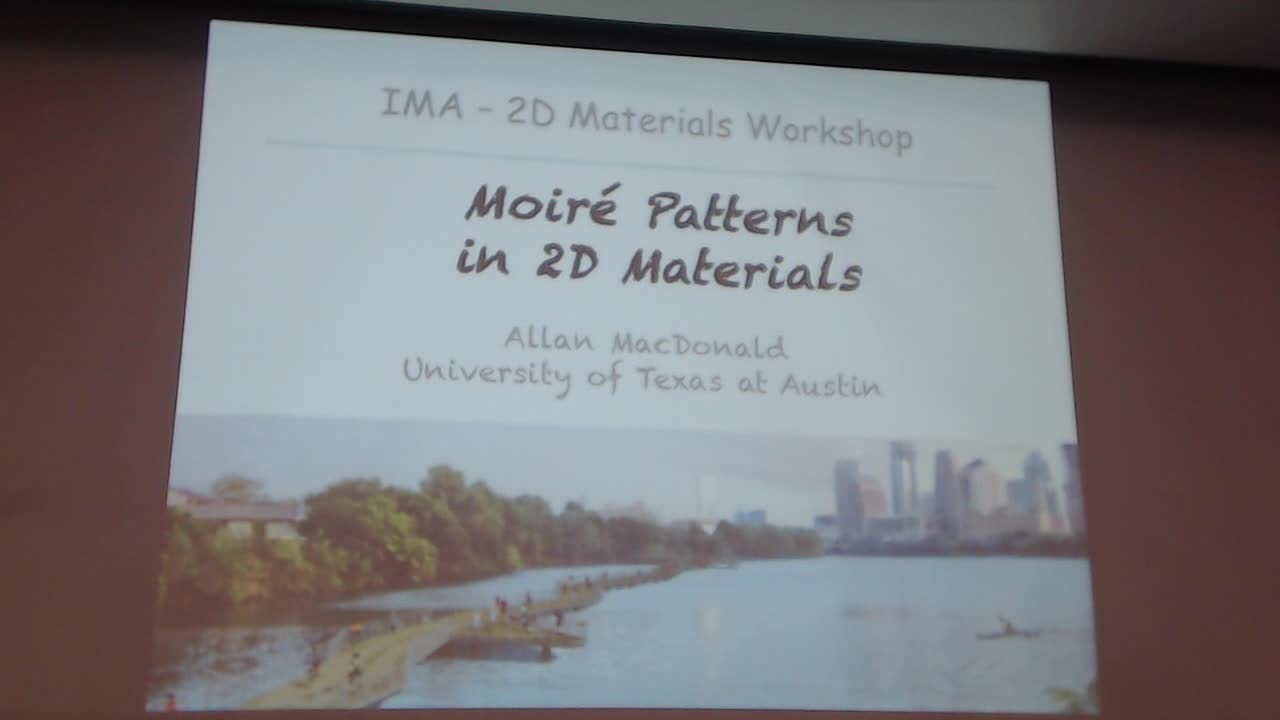Abstract
According to Wikipedia a moiré pattern (/mwɑːrˈeɪ/; French: [mwaˈʁe]) is a large scale interference pattern that is produced when an opaque regular pattern with transparent gaps is overlaid on another similar pattern. A moiré pattern appears only when the regular patterns are rotated by a small twist angle relative to each other or have different, but similar pitches. Moiré patterns are ubiquitous in two-dimensional van der Waals materials with regular patterns formed by two-dimensional crystals and differences in pitch established by differences between lattice constants. I will discuss some electronic properties of two-dimensional semiconductor, gapless semiconductor, and semimetal systems in which moiré patterns have been established.
In these three classes of materials many electronic properties depend on states localized in a small region of momentum space, allowing quantum mechanics to be formulated in terms of envelope function continuum models in which the underlying two-dimensional lattices no longer explicitly appear. In semiconductors and semimetals moiré patterns give rise [1] to a periodic modulation of continuum model Hamiltonians, and commensurability between the moiré pattern and the underlying crystal plays no role. For a given pair of two-dimensional crystals, the moiré pattern can be used to add periodic modulation with an experimentally adjustable unit cell area to a uniform continuum model two-dimensional Hamiltonian. I will discuss some examples [2,3] of new physics that can be explored using van der Waals material moiré patterns.
[1] Moire bands in twisted double-layer graphene, R. Bistritzer and A.H. MacDonald, PNAS 108, 12233 (2011).
[2] Fractional Hofstadter States in Graphene on Hexagonal Boron Nitride, Ashley M. DaSilva, Jeil Jung, and A.H. MacDonald, Phys. Rev. Lett. 117, 036802 (2016).
[3] Topological Exciton Bands in Moiré Heterojunctions, Fengcheng Wu, Timothy Lovorn, and A.H. MacDonald, Phys. Rev. Lett. 118, 147401 (2017).
